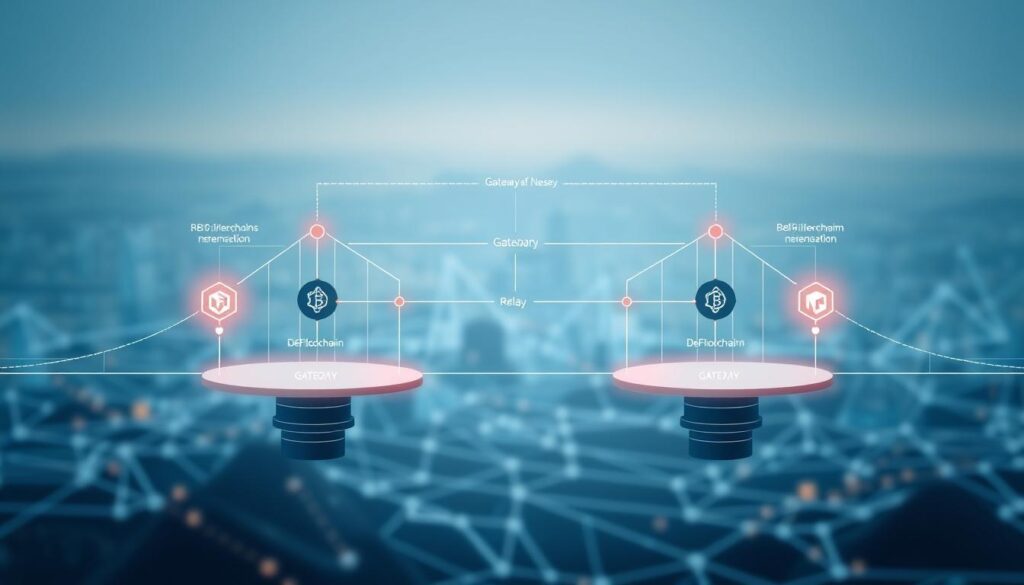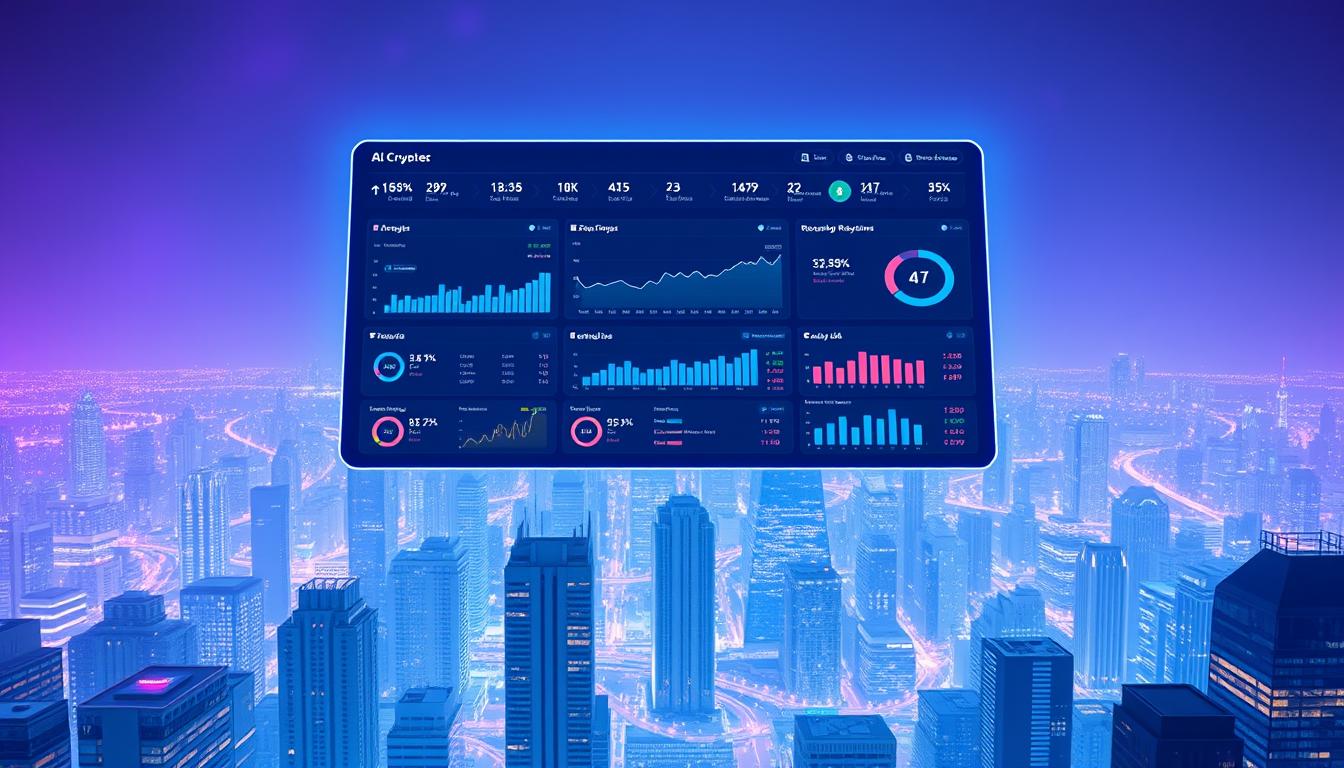Now Reading: Blockchain in Healthcare Patient Records Management: A New Era
- 01
Blockchain in Healthcare Patient Records Management: A New Era
Blockchain in Healthcare Patient Records Management: A New Era

Digital systems for storing medical information face serious challenges today. Data breaches happen often, putting sensitive personal details at risk. This creates a major problem for keeping health data safe.
Another issue is the difficulty of sharing information between different doctors and hospitals. The average person sees many providers throughout their life. This leads to a scattered collection of medical histories.
A new type of digital ledger technology offers a promising path forward. This system creates a permanent and unchangeable record of transactions. It could revolutionize how we handle sensitive health information.
The core strength of this approach is enhanced security and patient empowerment. Individuals could gain better control over their own health data. This allows different parts of the system to work together more effectively.
This guide will explore how this innovation addresses long-standing problems. We will look at its potential to improve care quality and operational efficiency.
Key Takeaways
- Current digital medical record systems are vulnerable to security breaches and data fragmentation.
- Sharing health information between different providers is often difficult and inefficient.
- New ledger technology creates a secure, tamper-proof system for managing sensitive data.
- This approach can give individuals greater control over their personal medical information.
- The technology promises to enhance collaboration and improve the overall quality of care.
Overview of Blockchain Technology in Healthcare
At its heart, this innovation functions as a distributed database. It removes the need for a single controlling authority. This structure is key to its application in managing sensitive information.
Defining Blockchain and Its Core Principles
Blockchain technology creates an authoritative and encrypted ledger. Data, once added, cannot be changed or deleted. This is known as a write-once, append-only system.
Each new piece of information forms a “block.” These blocks link together in a secure chain. Every block has a timestamp and a link to the previous one.
The entire network of computers, or nodes, holds a copy of the ledger. They work together to validate new entries. This decentralized approach ensures no single point of failure.
Historical Context and Evolution in Healthcare
The use of this technology in the health sector is growing rapidly. Early experiments focused on creating unified health records. The goal was to solve problems of scattered data.
Today, the market for these solutions is expanding significantly. Many organizations plan to deploy operational systems soon. This shows strong confidence in its potential for improving information sharing and security.
How blockchain in healthcare patient records management Enhances Data Security
Medical data protection requires innovative solutions that can withstand sophisticated attacks. Traditional systems often concentrate information in vulnerable central locations. This creates attractive targets for cybercriminals seeking valuable personal details.
Encryption and Decentralized Storage
Advanced cryptographic techniques form the foundation of this security approach. Each piece of health data receives unique digital signatures. These mathematical codes verify authenticity and prevent unauthorized modifications.

The distributed nature of storage eliminates single points of failure. Instead of one central database, identical copies exist across multiple network locations. This architecture ensures continuous availability even if some components experience issues.
Protection Against Data Breaches and Unauthorized Changes
Electronic records face constant threats from malicious actors. The immutable nature of this system creates permanent audit trails. Once information enters the ledger, it cannot be altered or deleted.
Private keys control access privileges with precision. Only authorized individuals can view or modify specific data elements. This granular permission structure significantly reduces vulnerability to data breaches.
| Security Feature | Traditional Systems | Blockchain Approach |
|---|---|---|
| Data Storage | Centralized servers | Distributed network |
| Access Control | Password-based | Cryptographic keys |
| Data Integrity | Modifiable records | Immutable ledger |
| Breach Impact | Complete system compromise | Localized incident only |
Research from recent studies confirms these security advantages. The technology effectively blocks unauthorized entry while maintaining necessary access for legitimate users. This balanced approach protects sensitive information without hindering medical workflows.
Architecture & Workflow of Blockchain for Medical Records
Seamless coordination among clinics, labs, and hospitals is achieved through a decentralized digital system. This network connects facilities, allowing them to share information securely. The entire process is automated for efficiency and accuracy.

Smart Contracts and Distributed Ledgers
A provider adds a new entry using an electronic health record interface. This action creates a transaction that requires endorsement from other participants in the blockchain network. Once verified, a smart contract executes automatically.
This automated agreement triggers the creation of a new block in the distributed ledger. Each block contains a unique cryptographic hash. This code links it to the previous and next entries, forming an unbreakable chain.
Integration with EHR and Healthcare IT Systems
When an individual visits a new facility within the network, providers can request access to their history. The person must authorize this sharing using a private identifier. Correct entry allows the smart contract to grant access instantly.
This technology integrates smoothly with existing tools. It works with patient portals, telehealth apps, and laboratory systems. This creates a unified health information ecosystem.
| Process Step | Traditional EHR System | Integrated Blockchain Network |
|---|---|---|
| Record Addition | Local database update | Network-wide verification |
| Data Access | Manual requests & approvals | Automated via smart contracts |
| Data Integrity | Potential for errors | Guaranteed via cryptographic hashing |
| System Interoperability | Often limited | Built-in across connected facilities |
This architecture ensures that data remains authentic and readily available to authorized providers. It empowers patients with control over their personal health information.
Benefits of Blockchain Technology in Personal Health Data Management
Individuals gain unprecedented authority over their medical data with innovative digital solutions. This approach transforms how sensitive health information is handled across the entire healthcare ecosystem.

Improved Security, Privacy, and Data Integrity
Advanced security measures protect personal health details through distributed verification. Every transaction requires network consensus before approval. This prevents unauthorized access to sensitive records.
Complete transparency shows exactly who viewed medical records and when. This audit trail ensures data integrity while maintaining strict privacy standards. The system creates permanent, tamper-proof health data preservation.
Enhanced Patient Control and Streamlined Access
Patients now manage consent settings with precision. They can grant or deny data access to specific providers. This puts individuals in charge of their health journey.
The technology eliminates complex interface requirements between entities. Authorized providers join networks seamlessly. Patient-generated information from devices integrates securely with clinical data.
This system balances privacy protection with efficient information sharing. It supports quality care delivery while respecting individual rights. The approach represents a significant advancement in healthcare management.
Real-World Implementations & Success Stories
Real-world deployments showcase how innovative ledger technology transforms health information exchange. These practical applications demonstrate the viability of decentralized approaches for managing sensitive medical data.
Case Study: MedRec and Collaborative Networks
The MIT Media Lab and Beth Israel Deaconess Medical Center developed the MedRec solution. This pioneering project created a comprehensive network connecting various healthcare providers.
The system enables secure access to medical records for hospitals, clinics, and insurance companies. Patients receive alerts when data transactions occur and maintain control over third-party access.

A six-month test entered medication data and vaccination history across separate sites. Doctors successfully accessed necessary records through the distributed system, proving the technology’s effectiveness.
Pilot Programs and Industry Partnerships
Estonia partnered with Guardtime for electronic health records management. The initiative issued one million personal identity smart cards for secure data access.
Patientory launched a storage service compatible with major EHR systems like Epic and Cerner. IBM Watson Health collaborates with the FDA to define scalable health data exchange standards.
Major corporations including Philips, IBM, and Microsoft actively develop healthcare solutions. International implementations span the United Arab Emirates, Thailand, and the UK’s NHS system.
Overcoming Challenges in EMR and Health Data Silos
Technical incompatibility between different medical software creates barriers to comprehensive care coordination. When individuals visit new doctors, their medical histories remain trapped in separate systems. This fragmentation poses serious risks during emergency situations.
Addressing Interoperability and Integration Issues
Electronic health record systems were never designed for multi-institutional lifetime data management. Different facilities employ diverse IT platforms that cannot communicate effectively. This creates isolated information silos that hinder proper care.
The distributed ledger approach eliminates data isolation by connecting all hospital systems through a unified network. It enables seamless data sharing across previously incompatible platforms. This creates a universal medical language that all healthcare technologies can understand.
Successful implementation requires careful analysis of integration capabilities with existing software. Designing robust APIs ensures complete interoperability with electronic health records and patient applications. This technical foundation supports smooth information flow.
| Integration Aspect | Traditional Approach | Distributed Ledger Solution |
|---|---|---|
| System Communication | Limited interface capabilities | Universal data exchange protocol |
| Data Accessibility | Restricted to local systems | Network-wide availability |
| Update Synchronization | Manual reconciliation required | Real-time automatic updates |
| Cross-Platform Compatibility | Frequent conversion errors | Standardized format acceptance |
User adoption presents another significant challenge. Medical staff require intuitive interfaces and comprehensive training programs. Tailored software guidelines help shorten learning curves for all users.
By connecting medical records from multiple sources, this technology ensures providers access complete histories. Information flows smoothly between facilities regardless of original treatment locations. This solves the fragmentation problem that has plagued medical data management for decades.
Cost Factors and Return on Investment in Blockchain Systems
Cost-benefit analysis becomes essential when healthcare organizations evaluate modern data management platforms. Initial implementation expenses can appear substantial, but strategic planning reveals significant long-term advantages.
Balancing Upfront Investments with Long-Term Savings
A consulting-first approach helps design systems that meet specific business needs. This strategy minimizes rework risks and ensures targeted spending.
Established DevOps and Agile practices streamline development processes. These methodologies reduce time-to-market while controlling project expenses effectively.
Implementing a minimum viable product with core features delivers early benefits. Organizations gain working solutions quickly, creating positive cash flow for further development.
Operational Efficiency and Maintenance Benefits
Distributed data storage eliminates expensive centralized infrastructure requirements. Network sharing reduces financial burdens on individual facilities significantly.
The self-sustaining architecture requires minimal technical maintenance. Fewer staff members are needed to manage records compared to traditional systems.
Shared network costs among all users make record keeping more affordable. This approach addresses the high expenses hospitals typically face for safe data preservation.
Future Trends and Regulatory Considerations
Regulatory frameworks and technological scalability present both challenges and opportunities for next-generation health information systems. The landscape is evolving rapidly as institutions explore distributed ledger solutions for medical data management.
Adapting to Evolving Healthcare Laws and Standards
Current privacy regulations like HIPAA weren’t designed for decentralized data exchange. This creates uncertainty about compliance. As the technology matures, legal frameworks must evolve to protect patient rights while enabling innovation.
Standardization remains a critical hurdle. Without established protocols, implementation varies across organizations. Industry-wide consensus is needed for seamless interoperability.
Scalability, Standardization, and Innovation Prospects
Storing complete medical records on distributed networks raises storage and transaction challenges. Solutions must handle large data volumes efficiently. This scalability is essential for widespread adoption.
The market projection reaching $11.04 billion by 2029 demonstrates strong confidence. This growth will make advanced systems accessible to smaller clinics. Patients will benefit from reduced costs and greater control over their information.
Research collaboration will accelerate with secure data sharing. Medical professionals worldwide can work together more effectively. This promises better care outcomes through global knowledge exchange.
Conclusion
Modern medicine stands at the threshold of a data management revolution. Distributed ledger solutions address critical vulnerabilities in traditional electronic systems while enabling seamless information sharing. This approach transforms how we handle sensitive medical information across the entire care continuum.
By placing individuals at the center of their health journey, this technology empowers people with unprecedented control over their personal data. Real-world implementations demonstrate practical viability, moving from concept to operational reality. The growing market projection confirms strong confidence in this innovative approach.
While challenges around standardization and scalability remain, the trajectory toward adoption is clear. Healthcare organizations should begin exploring these solutions now to position themselves for the inevitable digital transformation. Ultimately, this represents more than enhanced security—it’s about creating a connected, efficient system that delivers better outcomes for all.
FAQ
How does blockchain technology improve the security of medical data?
It uses encryption and decentralized storage across a network of computers. This makes it extremely difficult for unauthorized users to alter or access sensitive health information, significantly reducing the risk of data breaches.
What role do smart contracts play in managing health records?
Smart contracts automate rules for data access. For example, they can grant a doctor temporary permission to view a specific patient’s record, streamlining the sharing process while maintaining strict privacy controls.
Can blockchain systems work with existing Electronic Health Record (EHR) software used by hospitals?
A>Yes, integration is a key focus. Developers are creating interfaces that allow blockchain networks to communicate with traditional EHR systems. This helps bridge the gap between new technology and current infrastructure used by providers.
What is the main benefit for patients using a blockchain-based personal health record?
Patients gain unprecedented control. They can manage who sees their information—from primary care physicians to specialists—and can grant or revoke access with a full, transparent log of all activity.
What are the biggest challenges for adopting this technology in healthcare?
The primary hurdles are interoperability between different health IT systems and ensuring compliance with regulations like HIPAA. Standardizing data formats across the industry is crucial for widespread use.
Is implementing a blockchain solution for medical records expensive?
There are significant upfront costs for development and integration. However, the long-term return on investment comes from reduced administrative overhead, fewer security incidents, and improved operational efficiency for care providers.
How does a distributed ledger protect against unauthorized changes to a health record?
Every change or addition is recorded as a new “block” in the chain and verified by multiple nodes in the network. Altering a past entry would require changing all subsequent blocks on most computers in the network, which is practically impossible.















